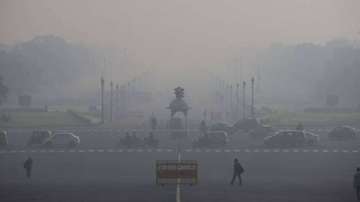The Delhi Pollution Control Committee (DPCC) released an analysis which showed that the concentration of fine, lung-damaging particulate matter PM2.5 and PM10 increased by 45 per cent and 33 per cent respectively on Diwali compared to last year.
Delhi's 24-hour average PM10 concentration on Diwali (Sunday) stood at 430 micrograms per cubic meter, an increase from 322 micrograms per cubic meter last year, and 748 micrograms per cubic meter in 2021, the DPCC report showed. The city recorded a 24-hour average PM2.5 concentration of 314 micrograms per cubic meter, compared to 217 micrograms per cubic meter last year and 607 micrograms per cubic meter in 2021.
The DPCC data revealed that, except for Alipur, Patparganj, Najafgarh, Karni Singh Shooting Range, and Okhla, all stations (total of 24) observed an increase in the concentration of PM10 in 2023 compared to 2022. It showed that all stations, except for those at Sri Aurobindo Marg, Vivek Vihar, and Karni Singh Shooting Range, witnessed an increase in the concentration of PM2.5.
The DPCC said that all gaseous pollutants, including ammonia, sulphur dioxide, nitrogen dioxide, carbon monoxide, ozone, and benzene, were found to be within the prescribed standards. Delhi recorded a jump in pollution levels and a smoky haze returned on Monday morning after residents flouted the ban on firecrackers on Diwali night.
ALSO READ | Death by Breath: 3 Indian cities in World's Top 10 polluted post Diwali
ALSO READ | Delhi Fire Service receives over 200 fire-related calls on Diwali
